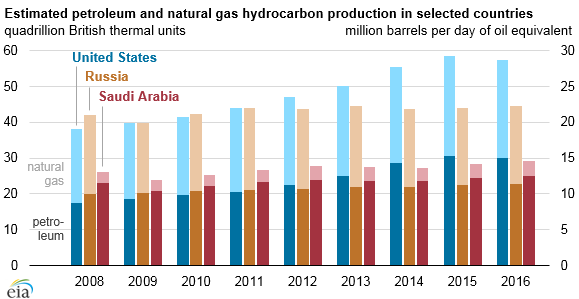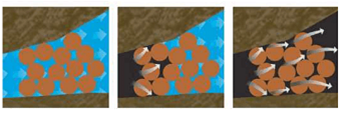Minnesota Mines Sand, Too
According to the United States Geological Survey (USGS), about $3.5 billion in industrial sand and gravel was mined in 2017 from about 340 operations in 35 States, including Minnesota.
Minnesota is the 8th-largest sand producing state in the country, producing sand and gravel for a wide variety of purposes, including construction sand, livestock bedding, glass-making, and more recently, hydraulic fracturing.
Hydraulic fracturing, also referred to as “fracking,” is a technique for oil and natural gas extraction that has resulted in a massive increase in oil and natural gas production in the United States. In fact, thanks to fracking the United States surpassed Russia as the leading producer of natural gas in the world, and America is expected to surpass Saudi Arabia as the world’s top producer of oil in 2018 (see the figure below).

The sand used in hydraulic fracturing, referred to as “frac sand,” helps boost recovery in oil and gas production by acting like pillars, holding open the tiny fractures created during the fracturing process and allowing oil and gas to flow more easily through oil and gas wells (see the picture below).

Minnesota could actually produce more frac sand than it currently does, but local governments have passed ordinances that make it more difficult to mine. One county, Winona County, even passed a ban on frac sand mining even though the county allows sand to be mined for other purposes, such as construction or livestock bedding.
This ban doesn’t make any environmental sense because the Minnesota Pollution Control Agency (MPCA) has conducted air monitoring studies that have shown that mining frac sand does not present a hazard to the environment. Furthermore, the environmental impacts of mining sand are the same regardless of the end-use.
It is important to remember that everything we use on a daily basis comes from the ground. If it is not grown, it must be mined. Therefore, it is imperative that Minnesota’s mining policies be based on the best-available scientific evidence, and not arbitrarily based on a product’s end-use.